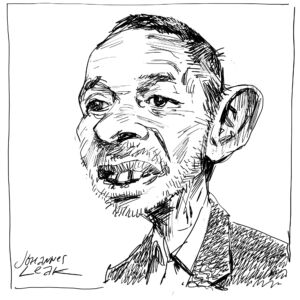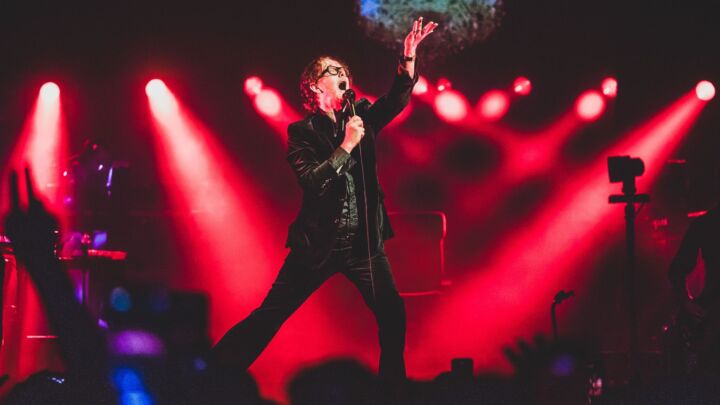
Long-read
The birth of the culture wars
This century-long conflict is born of the Western elites' loss of cultural and moral authority.
Want to read spiked ad-free? Become a spiked supporter.
Many pundits and politicians seem to blame UK prime minister Boris Johnson for provoking the latest installment of the culture wars that now dominate Anglo-American public life. Sections of the media, from the New York Times to the Guardian, have claimed that Johnson wants to argue over statues to distract from his poor handling of the Covid pandemic. Others, such as Labour’s David Lammy, reckon Johnson’s defence of the statue of Winston Churchill, against those who would deface or dismantle it, was a deliberate attempt to stoke the culture wars, and deflect attention from the Tories lack of progress on ‘racial injustice’.
These are massively disingenuous claims. After all, is it really surprising that a British prime minister would defend a memorial devoted to arguably the nation’s greatest modern figure? Moreover, Johnson was not initiating anything. He was responding to a movement that has been directing its energy towards the destruction of the symbols of Britain’s national history and culture. It takes tremendous bad faith to characterise Johnson’s defensive response to an attack on British culture as an attempt to launch a culture war.
But those on Johnson’s side, defending the Churchill statue, indulge in the same finger-pointing. They claim that it is their opponents, from Black Lives Matter to the identitarian left, who started the culture wars.
What is striking is that neither side seems to have anything positive to say about the culture wars. Their characterisation as ‘poisonous’, by veteran conservative commentator Charles Moore, is a sentiment shared by virtually all sides of the political argument. They disagree merely on the questions of who is to blame for them, and what they mean.
The origins of the culture war
One reason why so many observers are confused by the dynamics of the culture war is because it rarely assumes an explicit conflict-like character. It is often a silent conflict over what seem to be disparate issues – gay marriage, national identity, euthanasia – rather than a war between two clearly defined sides. In this sense, the modern culture war is very different to the German Kulturkampf of the 19th century, when there was an overt cultural struggle between Chancellor Bismarck and the Catholic Church.
Back then, in the late 19th century, it was evident to all observers that cultural conflict in Germany was a very real phenomenon. Matters are different today. Until recently, most commentators would insist that talk of the polarisation of culture is exaggerated; some went so far as to deny the very existence of a culture war. Those who denounced the cultural politics of Sixties’ radicals were often simply dismissed as backward-looking traditionalists – social conservatives trying to justify their prejudices by attacking new ways of thinking and speaking.
But the culture war is real. Historically, it was set in motion in Western societies by a powerful impulse to detach the present from the past, which emerged at the turn of the 20th century. This project of liberating the present from the cultural values of the past was most clearly formulated by the Progressive movement in the US, and by the New Liberals in Britain. But it was the experience of the First World War that gave this sentiment real momentum. For the war fundamentally undermined the cultural continuity of the West.
Disconnected from the past, post-war Western societies found it difficult to develop a compelling narrative through which to transmit their cultural legacy to young people. One outcome of this development was the phenomenon known today as the ‘generation gap’. It emerged in the aftermath of the First World War precisely because it was not simply a generational gap, but also a cultural one – a gap, that is, between the pre- and post-war eras. In the decades that followed, these generational tensions would come to be experienced as the problem of identity.
Some contemporary observers were indeed aware of the cultural war against the past then being waged. Writing in the 1930s, Churchill himself observed:
‘I wonder often whether any other generation has seen such astounding revolutions of data and values as those through which we have lived. Scarcely anything, material or established, which I was brought up to believe was permanent and vital, has lasted. Everything I was sure, or was taught to be sure, was impossible has happened.’
However, many commentators at the time, and in the decades to come, were blind to this cultural conflict. They focused on the ideological conflict between communism and capitalism, and the rise of fascism, rather than the loss of cultural authority of Western values.
One reason why Western ruling elites failed to address the loss of their moral authority was because of the difficulty they had in acknowledging that their own way of life was being unravelled by powerful corrosive influences internal to it. During the 1940s and 50s, even conservative commentators failed to appreciate the scale of the problem confronting their tradition. This became clear during what was the first significant, explicit conflict in the culture war: Senator Joseph McCarthy’s battle with communism and its supposed threat to American values.
The rise of McCarthyism in the US is often seen as an attempt to deploy anti-communist hysteria to silence political dissent. Yet it was also an attempt to roll back the cultural influences threatening traditional norms and values. ‘McCarthyism in the 1950s’, observed the political sociologist Daniel Bell, ‘represented an effort by some traditionalist forces to impose a uniform political morality on the society through conformity to one ideology of Americanism and a virulent form of anti-communism.’ (1)
At the time, McCarthyism was influential and it did intimidate many liberal and left-wing individuals. But it failed to establish cultural hegemony. In particular, McCarthy never made serious headway among intellectuals or gained any cultural credibility. McCarthyism’s failure to gain and retain moral authority is demonstrated by its almost entirely negative legacy. As one critic recalled in 1997, McCarthy soon became a symbol of the moral exhaustion of the right — so much so, in fact, that he is generally held in cultural contempt (2).
McCarthy’s anti-communist crusade can be seen as one of the earliest attempts (and failures) after the Second World War to revitalise traditional values in the face of their rapid demise. One of the most astute analyses of the McCarthy episode was provided by the conservative commentator, Jeanne Kirkpatrick. Kirkpatrick understood that McCarthyism was not so much about communism as it was a struggle for ‘jurisdiction over the symbolic environment’ (3). What was at issue was who would serve as the arbiter of culture and whose narrative would prevail.

The failure of McCarthy to hold the line and the rapid decline of his reputation had important implications. These things indicated that, although a potent political resource, anti-communist ideology on its own could not contain the corrosive outcomes of the moral depletion of Western culture. Kirkpatrick asserted that McCarthy’s demise and the victory of his critics was a ‘precondition of the rise of the counterculture in the 1960s’ (4). Whereas during the McCarthy era, the term ‘loyalty’ was rarely openly contested, by the 1960s it had lost some of its cultural value. Anti-war demonstrators, draft-dodgers and ordinary members of the public rejected loyalty as an unwelcome imposition on their ability to be themselves. As Kirkpatrick recalled, the ‘peace marchers were far more aggressive in their defiance of traditional taboos than the timid victims of Joe McCarthy’. This, Kirkpatrick concluded, ‘reflected the distance that the cultural revolution had proceeded’ (5).
The moral depletion of the West
The casual manner with which traditional taboos were derided in the 1960s showed that those who upheld traditional values could no longer assume that they occupied the moral high-ground. In this, the cultural assault on the values of capitalist consumer society played a significant role. However, this assault should be seen as a catalyst for, rather than a cause of, the unravelling of the Cold War consensus on Western values. The inner corrosion of the ethos of capitalism had been at work for many decades, and the lack of self-belief among the ruling elites contributed to its diminishing influence.
Since the interwar era, capitalism as a social system has found it increasingly difficult to justify itself against its critics. Matters were made worse by the reluctance of conservative and liberal thinkers to confront this problem directly.
The absence of an intellectually compelling, normative foundation for capitalism meant that even at the height of the postwar boom, capitalism was exposed to a cultural critique of its values. Consequently, even in these very favourable circumstances, capitalism acquired only a limited influence over intellectual and cultural life. This estrangement of capitalism from its own culture emerged with full force in the late 1960s, when many of its values were explicitly challenged in what would turn out to be an interminable culture war.
Writing in 1973, Irving Kristol, a leading conservative commentator, drew attention to the moral depletion of Western culture:
‘For well over 150 years now, social critics have been warning us that bourgeois society was living off the accumulated moral capital of traditional religion and traditional moral philosophy, and that once this capital was depleted, bourgeois society would find its legitimacy ever-more questionable.’ (6)
The depletion of moral capital became evident with the emergence of the counterculture, or what its opponents called adversarial culture.
Samuel Brittan, a British economist and journalist, offered a sobering analysis on the difficulty that capitalism faced in offering a compelling and authoritative account of its values. He wrote:
‘For a long time capitalist civilisation was able to live on this feudal legacy, and the aura of legitimacy was transferred from the feudal lord to the employer, from the mediaeval hierarchy of position to that derived from the luck of the marketplace. But this feudal legacy was bound to be extinguished by the torchlight of secular and rationalistic inquiry, which was itself so closely associated with the rise of capitalism.’ (7)
Brittan believed that modern politicians and middle-class leaders lacked the ‘glamour’ and the ‘heroic qualities’ of the leaders of the past. And therefore their authority over the masses was limited. ‘At most they are tolerated on the strict condition that they bring results’, he wrote. Brittan asserted that the ‘personal qualities of middle-class leaders did not help to kindle that affection for the social order which is probably necessary if it is not to be blamed for the inevitable tribulations and disappointments of most people’s lives’ (8).
By the 1970s, it became clear that supporters of ‘adversarial culture’ had gained the upper hand. As a memo from Daniel Moynihan to Nixon in 1970 stated:
‘No doubt there is a struggle going on in this country of the kind the Germans used to call a Kulturkampf. The adversary culture which dominates almost all channels of information transfer and opinion formation has never been stronger, and as best I can tell it has come near to silencing the representatives of traditional America.’
Since the 1970s, the representatives of traditional America have been constantly on the defensive. Instead of initiating debates and attempting to set the agenda, they have been continually forced to react to the latest blow directed at their way of life. This cycle of defensive responsiveness can be seen on many issues, from gay marriage or trans rights to claims about white privilege.
The paralysis of traditionalists
The pessimistic diagnosis offered by Moynihan and Brittan was widespread among conservative thinkers. Periodic attempts to promote ‘back to basics’ campaigns in the 1970s and 1980s proved to be singularly ineffective. At this point in time, the mainstream conservative and right-wing parties attempted to evade the consequences of their cultural isolation by emphasising their ability to achieve economic success. The high point of this strategy arrived during the Thatcher-Reagan years, when their brand of economic liberalism gained hegemony over public life. However, what the supporters of Thatcher and Reagan failed to notice, or acknowledge, was that despite the electoral success of their parties, their opponents were winning the culture war. Paradoxically, it was during the Thatcher and Reagan years that what came to be known as political correctness gained ascendancy and identity politics became institutionalised, first on campuses and later in the public and private sectors.
Today, when the reality of a culture war is widely recognised, it is worth noting that until recently almost all sides of the political divide were reluctant to draw attention to it. That is why supporters of political correctness went out of their way to deny there was such a thing as PC. Similarly, until recently, advocates of identity politics insisted that identity politics was a dishonest invention of their opponents.

The culture war was not a suitable topic for discussion in polite elite circles. When Patrick Buchanan made his famous culture-war speech at the 1992 Republican Party conference, he faced a tirade of hostile criticism for what was described as his extreme rhetoric. Buchanan’s call to arms went against the grain of the prevailing narrative. Buchanan insisted that differences over values were far more significant than ‘who gets what’ arguments over economic resources:
‘It is about who we are. It is about what we believe. It is about what we stand for as Americans. There is a religious war going on in our country for the soul of America. It is a cultural war, as critical to the kind of nation we will one day be as the Cold War itself’
His denunciation of what he perceived as a threat to the American way of life showed that this was now being conceived of as a war, rather than as party-political rivalry within a shared moral universe. Buchanan later expanded on this point by contrasting the conflict faced by 1990s America with that of the interwar depression. Citing Roosevelt, who said that ‘our common difficulties’ concern ‘thank God, only material things’, Buchanan noted that, in contrast, ‘our national quarrel goes much deeper’.
What was noteworthy about this speech was not simply its content but that Buchanan articulated it in public, at a major party conference and in front of television cameras. Hitherto, the conflict that Buchanan drew attention to had essentially been a silent one.
One reason why Buchanan’s speech caused such a stir was because, by 1992, the old traditional elites had more or less been entirely sidelined by their adversaries. The countercultural movement had been institutionalised, and its representatives dominated institutions of culture, higher education and the public sector. And, since then, businesses and the private sector have also come under its sway.
Having gained hegemony, members of this countercultural establishment are now less and less afraid to impose their own values on the rest of society. From their standpoint, Boris Johnson is an elite outlier, and his defence of Churchill offers them a reminder that there are still obstacles to the realisation of the project of detaching society from the legacy of its past. They now constitute the cultural establishment, and people who wish to defend the statues of Churchill or Abraham Lincoln are their countercultural adversaries.
At present, the culture war is a one-sided conflict that is directed at a defensive traditionalist target. Why this is so, and what are the issues at stake, will be discussed in part two of this essay, next Friday.
Frank Furedi’s How Fear Works: The Culture of Fear in the Twenty-First Century is published by Bloomsbury Press.
All pictures, unless otherwise stated, by: Getty.
(1) The Cultural Contradictions of Capitalism, by Daniel Bell, Heinemann, 1976, p77
(2) Dynamics of Destruction: Culture and Mass Killing in the First World War, by A Kramer, Oxford University Press, 2007
(3) ‘Politics and the new class’. by JJ Kirkpatrick, Society, 16(2), 1979, p42
(4) ‘Politics and the new class’. by JJ Kirkpatrick, Society, 16(2), 1979, p43
(5) ‘Politics and the new class’. by JJ Kirkpatrick, Society, 16(2), 1979, p44
(6) ‘Capitalism, Socialism and Nihilism’, by Irving Kristol, Public Interest, issue 31, 1973, p12
(7) ‘The Economic Contradictions of Democracy’, by S Brittan, British Journal of Political Science, Vol 5, No 2, 1975, p149
(8) ‘The Economic Contradictions of Democracy’, by S Brittan, British Journal of Political Science, Vol 5, No 2, 1975, p149
Who funds spiked? You do
We are funded by you. And in this era of cancel culture and advertiser boycotts, we rely on your donations more than ever. Seventy per cent of our revenue comes from our readers’ donations – the vast majority giving just £5 per month. If you make a regular donation – of £5 a month or £50 a year – you can become a and enjoy:
–Ad-free reading
–Exclusive events
–Access to our comments section
It’s the best way to keep spiked going – and growing. Thank you!







Comments
Want to join the conversation?
Only spiked supporters and patrons, who donate regularly to us, can comment on our articles.